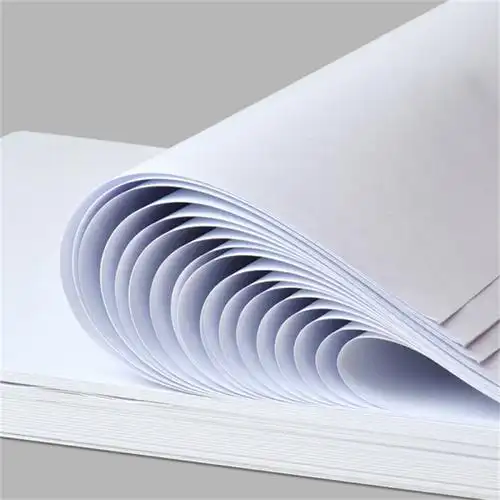The Ultimate Guide to Understanding Different Types of Paper
Introduction
In today's digital era, paper still plays a crucial role in many aspects of our daily lives, from offices and schools to creative and artistic endeavors. With so many types of paper available on the market, it can be overwhelming to choose the right one for your specific needs. This guide aims to provide a comprehensive overview of different types of paper, explaining their unique properties and optimal uses.
Understanding Paper Basics
What is Paper?
Paper is a thin material produced by pressing together moist fibers, typically cellulose derived from wood, rags, or grasses, and drying them into flexible sheets. It is used for writing, printing, packaging, and various industrial and construction processes.
Paper Characteristics
- Weight: Measured in grams per square meter (gsm). Heavier paper is thicker and more durable.
- Brightness: Refers to how much light the paper reflects. The brighter the paper, the more vibrant the color prints will be.
- Opacity: Denotes the transparency of the paper. Higher opacity means less show-through of ink from the other side.
- Finish: The texture of paper affects how ink interacts with the surface. Common finishes include matte, glossy, satin, and textured.
Common Types of Paper
Copy Paper vs. Printer Paper
While often used interchangeably, copy paper and printer paper have distinct characteristics:
- Copy Paper: Generally lightweight, around 75-90 gsm. It's designed for everyday printing tasks such as printing documents, memos, and letters. This paper is usually non-coated and offers a smooth surface for easy handling by printers.
- Printer Paper: Slightly heavier and higher quality than copy paper, typically ranging from 90-120 gsm. It is designed for both inkjet and laser printers and is well-suited for printing high-quality documents and graphics.
Specialty Printing Paper
Beyond the basic types, there are specialty papers designed for more specific uses:
| Paper Type | Characteristics | Uses |
|---|---|---|
| Cardstock | Thicker and more durable than regular paper, usually weighing between 135-300 gsm. | Ideal for business cards, postcards, and craft projects. |
| Photo Paper | Features a glossy, satin, or matte coating for high-resolution image printing. | Used for printing photographs and high-quality graphics. |
| Resume Paper | Heavier with a textured finish, typically around 120-150 gsm. | Used for printing resumes and other professional documents. |
| Translucent (Vellum) Paper | Semi-transparent with a smooth finish. | Commonly used in invitations, overlays, or artistic designs. |
Art and Craft Paper
Watercolor Paper
Designed specifically for watercolor painting, this paper is available in different textures:
- Hot Pressed: Smooth surface, allows for detailed work.
- Cold Pressed: Slightly textured and ideal for larger washes.
- Rough: Very textured, providing a distinct look to the painted piece.
Craft Paper Types
Various types of paper are used in arts and crafts, including:
- Construction Paper: Available in a variety of colors, used widely in schools for craft projects.
- Tissue Paper: Lightweight and delicate, ideal for gift wrapping and decorative uses.
- Origami Paper: Specifically designed for folding and is often printed with vibrant colors.
Scrapbooking Paper
This paper is specifically designed for creating scrapbook pages, available in numerous patterns, colors, and textures. Scrapbooking paper is typically acid-free and lignin-free to help preserve photographs and memorabilia over time.
Industrial and Packaging Paper
Cardboard
Cardboard is a heavier paper stock and is used in various packaging needs. It comes in different types, including corrugated, chipboard, and paperboard, each serving specific purposes in packaging and shipping.
Parchment Paper
Parchment paper is grease-resistant, heat-resistant, and moisture-resistant, often used in baking and cooking as a liner for pans and trays.
Eco-Friendly Paper Options
Recycled Paper
Produced from recycled material, this paper helps reduce the demand for virgin pulp and lowers the environmental footprint associated with paper production.
Tree-Free Paper
Made from non-wood fibers like bamboo, hemp, or agricultural residues. Tree-free paper provides an alternative for reducing deforestation.
Biodegradable and Compostable Paper
Includes papers that decompose naturally without harming the environment, often used for disposable items like plates and cups.
Conclusion
Understanding the different types of paper and their specific applications can significantly enhance your projects, whether they're professional documents, creative arts, or everyday printing tasks. By selecting the right paper type, you ensure optimal quality and performance while also having the opportunity to make environmentally conscious choices.
With this guide, you'll be better equipped to navigate the wide array of paper options available and make informed decisions for your home, office, or artistic needs.











 浙公网安备
33010002000092号
浙公网安备
33010002000092号 浙B2-20120091-4
浙B2-20120091-4